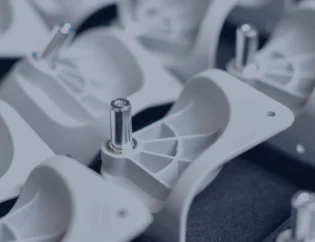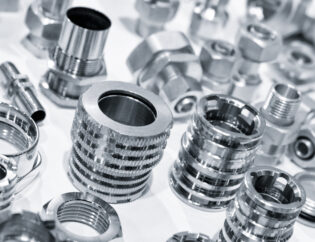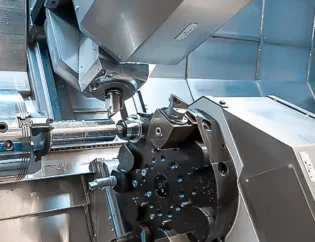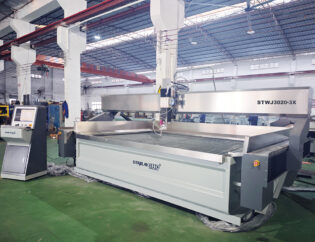CNC boring bars are essential tools in modern machining, enabling precision and efficiency in the creation of complex parts. This guide delves into the intricacies of CNC boring bars, exploring their design, functionality, and applications across various industries. Understanding these tools is crucial for machinists and engineers aiming to enhance their production capabilities.
Readers can expect to learn about the different types of CNC boring bars, their operational principles, and best practices for usage. We will also cover maintenance tips to ensure longevity and optimal performance. By the end of this guide, you will have a comprehensive understanding of how to effectively utilize CNC boring bars in your projects.
Comprehensive Guide to CNC Boring Bars
A boring bar is crucial in machining for enlarging existing holes with precision. This guide covers different types of boring bars, essential features, and tips for selecting the right one for your lathe cutting tools needs.
Technical Features of Boring Bars
Boring bars are designed with various technical features that enhance their performance. Below is a comparison table highlighting the key technical features of different boring bars.
| Feature | Solid Carbide Boring Bars | High-Speed Steel (HSS) Boring Bars | Dampened Boring Bars |
|---|---|---|---|
| Material | Tungsten Carbide | High-Speed Steel | Tungsten Carbide |
| Rigidity | High | Moderate | High |
| Durability | Excellent | Good | Excellent |
| Cutting Edge Retention | Superior | Moderate | Superior |
| Vibration Resistance | Moderate | Low | High |
| Coolant Features | Coolant-through options | None | Center through coolant |
| Applications | Precision machining | General purpose | Deep hole boring |
Types of Boring Bars
Boring bars come in various types, each suited for specific applications. The following table summarizes the different types of boring bars and their characteristics.
| Type | Description | Best Use Cases |
|---|---|---|
| C-Style Inserts | Diamond 80° for external machining and facing. | Rough machining |
| D-Style Inserts | Diamond 55° for versatile finishing and detail work. | Finishing and detail work |
| V-Style Inserts | Diamond 35° for finishing and detail work. | Finishing applications |
| T-Style Inserts | Triangle 60° for internal machining. | ID roughing and finishing |
| W-Style Inserts | Trigon 80° with three cutting edges per side. | Roughing with limited depth of cut |
Insights into Boring Bars
Solid Carbide Boring Bars
Solid carbide boring bars are the pinnacle of tooling for precision machining. Renowned for their exceptional rigidity and durability, these tools retain their sharpness even when facing the toughest metals. They are engineered to be 70% stronger than their round neck counterparts, ensuring they can withstand the stresses of rigorous machining processes without breaking a sweat.
High-Speed Steel (HSS) Boring Bars
HSS boring bars are typically used for low-end jobs that don’t involve too much bar overhang. They are less rigid than carbide bars and can deflect excessively if hung more than 3-4 times their diameter. However, they are still a popular choice for general-purpose applications due to their cost-effectiveness.
Dampened Boring Bars
Dampened boring bars are designed to combat vibration, making them ideal for deep hole boring. They feature an internal damping system that reduces chatter, ensuring better surface finishes and higher metal removal rates. These bars are particularly useful in demanding sectors like aerospace and automotive manufacturing.
Clamping Styles
Boring bars utilize various clamping styles to secure the inserts. The most common styles include:
– Multi-Lock System: Provides rigid clamping for negative-style inserts.
– Lever-Lock System: Offers a compact design for reliable clamping.
– Screw-On System: Ideal for positive-style inserts, ensuring a secure hold without interfering with chip flow.
Choosing the Right Boring Bar
Selecting the ideal boring bar for your project is akin to choosing the right key for a lock – it must be a perfect fit. The alignment of the boring bar tip is critical; it should align perfectly with the hole’s centerline or sit slightly above to compensate for any potential deflection. Utilizing the largest boring bar that fits within the hole minimizes deflection and ensures effective chip evacuation.
Tips for Effective Use
- Reduce Tool Stick-Out: This helps in minimizing chatter.
- Use Square Inserts: They provide better stability and cutting edge strength.
- Opt for High-Pressure Coolant: This aids in chip control and cooling.
Maintenance and Care
The longevity and performance of boring bars are directly tied to their maintenance and care. Establishing and adhering to a consistent maintenance schedule is paramount for sustaining optimal performance. Regular lubrication is necessary for the safe and efficient operation of these tools.
Accessories for Boring Bars
Boring bars rely on accessories such as boring heads and mounting tools to perform at their best. Boring heads enable meticulous adjustments during operations, allowing machinists to control the boring diameter with incredible accuracy.
Conclusion
In conclusion, boring bars are essential tools in machining, offering precision and versatility across various applications. Understanding the different types, technical features, and maintenance practices can significantly enhance machining performance. Whether you choose solid carbide, HSS, or dampened boring bars, ensuring proper selection and care will lead to superior results in your machining projects.
FAQs
Related Video
What makes solid carbide boring bars superior to other types?
Solid carbide boring bars are superior due to their exceptional rigidity, durability, and ability to maintain sharpness while boring through tough metals.
How do coolant-through boring bars enhance machining performance?
Coolant-through boring bars improve heat dissipation and chip clearing, leading to superior surface finishes, especially in deep hole boring.
What are the benefits of using dampened boring bars?
Dampened boring bars reduce chatter and vibration, resulting in better surface finishes and higher metal removal rates in deep boring operations.
What are some key maintenance tips for boring bars?
Regular lubrication, maintaining tip sharpness, and proper cleaning and storage are crucial for extending the life of boring bars.
How do I choose the right boring bar for my project?
Select a boring bar that aligns perfectly with the hole’s centerline, and use the largest bar that fits to minimize deflection and ensure effective chip evacuation.









